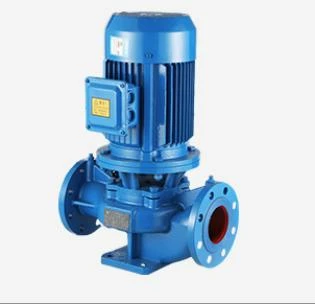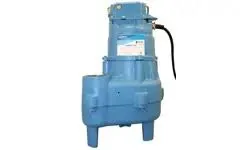TEL:
+86 13120555503
Greek
- Afrikaans
- Albanian
- Amharic
- Arabic
- Armenian
- Azerbaijani
- Basque
- Belarusian
- Bengali
- Bosnian
- Bulgarian
- Catalan
- Cebuano
- Corsican
- Croatian
- Czech
- Danish
- Dutch
- English
- Esperanto
- Estonian
- Finnish
- French
- Frisian
- Galician
- Georgian
- German
- Greek
- Gujarati
- Haitian Creole
- hausa
- hawaiian
- Hebrew
- Hindi
- Miao
- Hungarian
- Icelandic
- igbo
- Indonesian
- irish
- Italian
- Japanese
- Javanese
- Kannada
- kazakh
- Khmer
- Rwandese
- Korean
- Kurdish
- Kyrgyz
- Lao
- Latin
- Latvian
- Lithuanian
- Luxembourgish
- Macedonian
- Malgashi
- Malay
- Malayalam
- Maltese
- Maori
- Marathi
- Mongolian
- Myanmar
- Nepali
- Norwegian
- Norwegian
- Occitan
- Pashto
- Persian
- Polish
- Portuguese
- Punjabi
- Romanian
- Russian
- Samoan
- Scottish Gaelic
- Serbian
- Sesotho
- Shona
- Sindhi
- Sinhala
- Slovak
- Slovenian
- Somali
- Spanish
- Sundanese
- Swahili
- Swedish
- Tagalog
- Tajik
- Tamil
- Tatar
- Telugu
- Thai
- Turkish
- Turkmen
- Ukrainian
- Urdu
- Uighur
- Uzbek
- Vietnamese
- Welsh
- Bantu
- Yiddish
- Yoruba
- Zulu
Telephone: +86 13120555503
Email: frank@cypump.com
Φεβ . 18, 2025 02:10 Back to list
Pipeline Pump
Navigating the complexities of wastewater management in residential and commercial settings often involves finding the right equipment to ensure efficient and reliable operations. One essential device in this arsenal is the lift pump for sewer systems. Designed to move wastewater from lower to higher elevations, lift pumps are critical for properties where gravity alone cannot facilitate the natural flow of sewage. In choosing a lift pump for sewer applications, understanding the nuances of their operation and installation can markedly improve system performance and reduce the likelihood of costly repairs or replacements.
For homeowners and businesses concerned with energy efficiency, variable speed technology offers significant benefits. By adjusting the pump’s speed based on real-time demands, these systems can operate more efficiently, leading to reduced energy consumption and costs. While the initial investment may be higher, the long-term savings typically justify the additional expense. Moreover, integrating smart technology with lift pumps has become increasingly popular. These systems can alert users of potential issues via notifications on smartphones, allowing for proactive maintenance. Early detection of problems such as blockage, motor failure, or wear can prevent more significant issues, safeguarding both the pump and the property it serves. Trustworthy lift pump manufacturers often provide warranties that are a testament to confidence in their products. A comprehensive warranty not only covers the pump itself but also extends to critical components such as the motor and electrical system. Review warranty terms carefully and consider extended service plans if available. In terms of user credibility, case studies and testimonials from other property owners who have successfully installed and operated similar lift pump systems can be invaluable. These experiences provide insight into real-world performance and reliability, offering reassurance and informed decision-making support. Lastly, it’s essential to have professional installation and maintenance services from certified plumbers or technicians. Their expertise ensures that the lift pump is set up correctly according to industry standards and local regulations. Routine check-ups and servicing prolong the life of the pump, maintaining efficiency and preventing untimely breakdowns. In conclusion, selecting the right lift pump for sewer systems hinges on understanding the specific operational needs and the characteristics of potential pumps. With technological advancements and more sophisticated systems available, the choice of the ideal lift pump can enhance efficiency, ensure reliability, and promote peace of mind for both residential and commercial users.


For homeowners and businesses concerned with energy efficiency, variable speed technology offers significant benefits. By adjusting the pump’s speed based on real-time demands, these systems can operate more efficiently, leading to reduced energy consumption and costs. While the initial investment may be higher, the long-term savings typically justify the additional expense. Moreover, integrating smart technology with lift pumps has become increasingly popular. These systems can alert users of potential issues via notifications on smartphones, allowing for proactive maintenance. Early detection of problems such as blockage, motor failure, or wear can prevent more significant issues, safeguarding both the pump and the property it serves. Trustworthy lift pump manufacturers often provide warranties that are a testament to confidence in their products. A comprehensive warranty not only covers the pump itself but also extends to critical components such as the motor and electrical system. Review warranty terms carefully and consider extended service plans if available. In terms of user credibility, case studies and testimonials from other property owners who have successfully installed and operated similar lift pump systems can be invaluable. These experiences provide insight into real-world performance and reliability, offering reassurance and informed decision-making support. Lastly, it’s essential to have professional installation and maintenance services from certified plumbers or technicians. Their expertise ensures that the lift pump is set up correctly according to industry standards and local regulations. Routine check-ups and servicing prolong the life of the pump, maintaining efficiency and preventing untimely breakdowns. In conclusion, selecting the right lift pump for sewer systems hinges on understanding the specific operational needs and the characteristics of potential pumps. With technological advancements and more sophisticated systems available, the choice of the ideal lift pump can enhance efficiency, ensure reliability, and promote peace of mind for both residential and commercial users.
Share
Next:
Latest news
-
Reliable Non-Clog Sewage Pumps with GPT-4-Turbo Tech
NewsAug.04,2025
-
High-Performance Air Pumps for Sand & Gravel | Efficient Transport
NewsAug.03,2025
-
ISG Series Vertical Pipeline Pump - Chi Yuan Pumps Co., LTD.|Energy Efficiency, Corrosion Resistance
NewsAug.03,2025
-
ISG Series Pipeline Pump - Chi Yuan Pumps | Energy Efficiency&Compact Design
NewsAug.03,2025
-
ISG Series Vertical Pipeline Pump - Chi Yuan Pumps Co., LTD.|High Efficiency, Low Noise, Durable
NewsAug.02,2025
-
ISG Series Vertical Pipeline Pump - Chi Yuan Pumps | High Efficiency, Low Noise
NewsAug.02,2025










